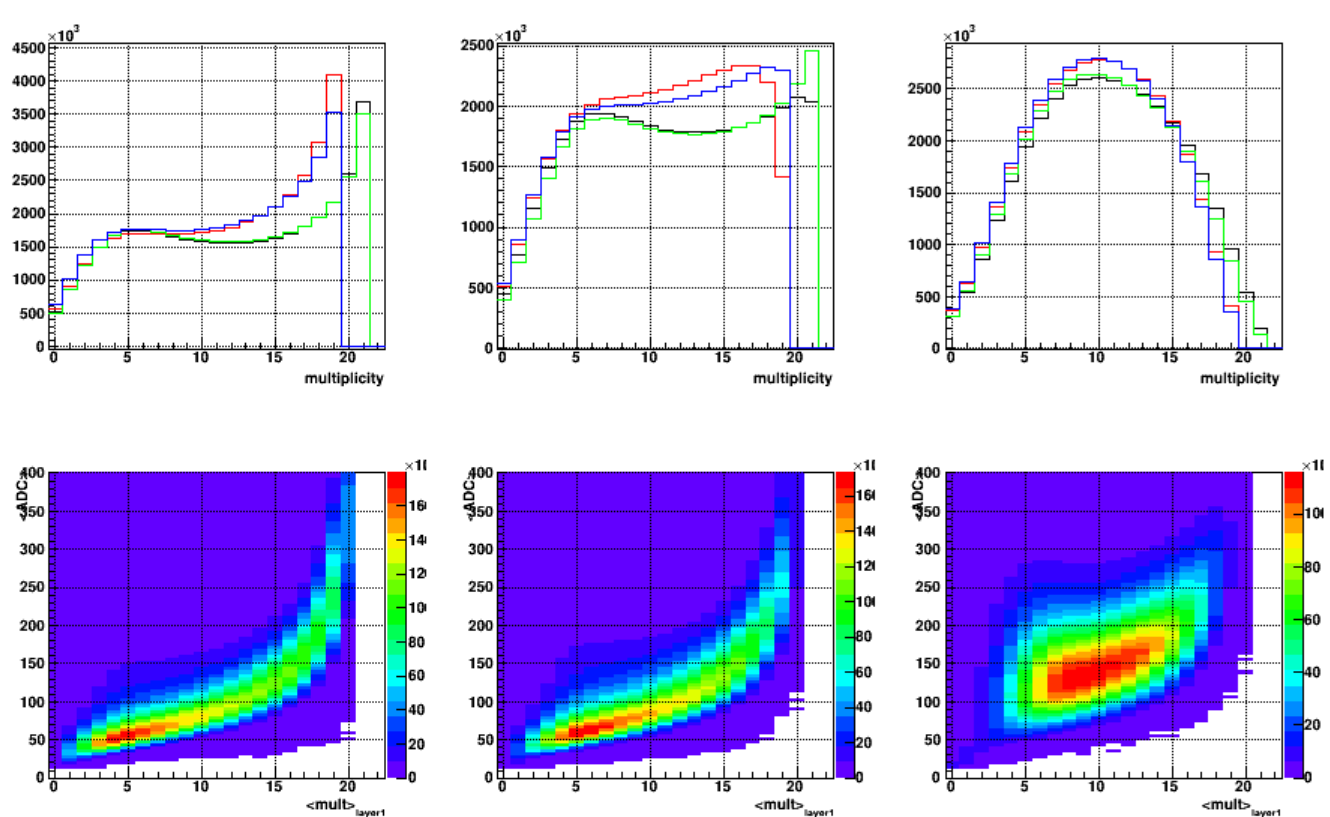Multiplicity in FPS (2017)
Example fill 20669 (first good fill in 2017 with FPS and FMS in the readout, day 84)
Left to right: FPS layers 1 - 3, colors represent different quadrants
The rise towards high multiplicities is an indication of background from upstream; layer 3 (behind the converter) is not affected.
The background is more pronounced in the accelerator plane (higher multiplicities in layer 1 with vertical slats).
The mean <ADC> per channel increases steeper at high multiplicities <mult>.
This is in addition to the linear increase, which is a result of the pile-up (two or more MIPs) in single channels.
The change in slope appears at around <mult>=12.
This >>>file<<< shows ADC-distributions for all channels with and without a cut on the multiplicity (multiplicity<48 per layer, i.e. 12 on average per quadrant).
It is apparent, that the multiplicity cut removes disproportionately high ADC values where the suspected two-MIP bump caused confusion.
Also, the overall probability for a MIP per channel and per event drops by a factor of 3 or so, which is much more line with expectations from event generator simulation.

- oleg's blog
- Login or register to post comments
